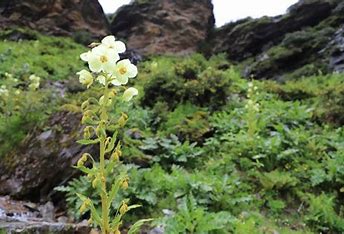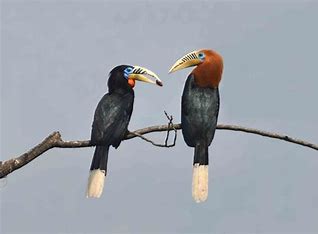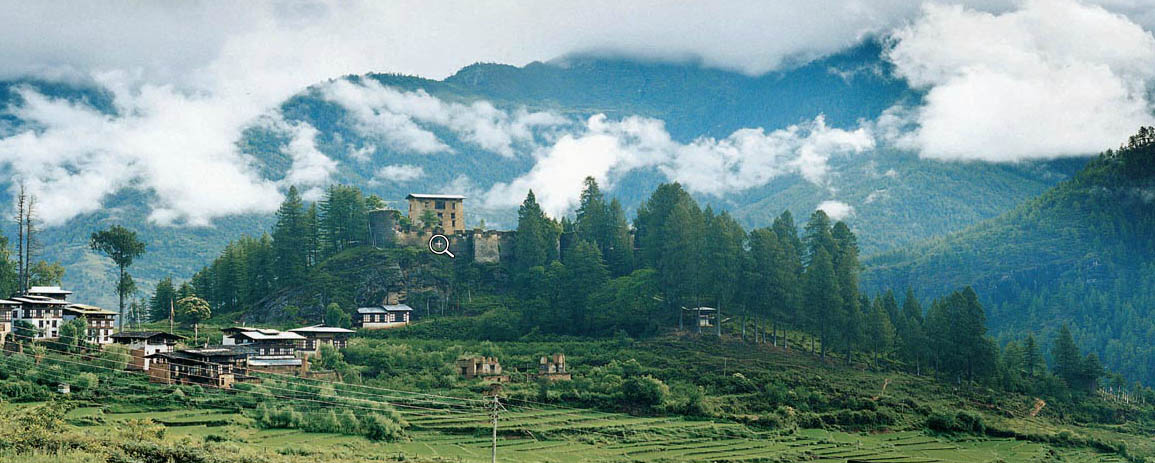
The Bumdeling Wildlife Sanctuary in Trashiyangtse is home to this endangered species of butterfly. It is the national butterfly of Bhutan and is commonly seen in the months of August and September. This eastern district is also known to be a haven for birds like Ward's Trogon, Babblers and Pheasants.
2.Swallowtails of Bhutan

Swallowtail butterflies are large and striking butterflies identified by their forked tails. In Bhutan you can find 42 of 550 species of these majestic butterflies. They are commonly seen in Trashiyangtse in Autumn.
3.Black-necked Cranes

Black-necked Cranes are a globally threatened species. To locals, their arrival signifies good luck and good harvest. Their presence also indicates healthy agricultural land and surrounding ecosystems. They can be spotted in Phobjikha Valley in Western Bhutan, Bumthang in Central Bhutan and in Bumdeling in Eastern Bhutan. They migrate to these winter roosting sites in the months of September and October and fly back to Tibet between February and March.
4.Red Panda

Bhutanese believe that seeing a red panda in the wild will bring good luck on your travels. Found in temperate Himalayan forests, these globally threatened mammals have been seen in 17 districts of Bhutan including 7 protected areas and all 8 biological corridors.
5.Golden Langur

One of the world's most threatened primates, experts estimate that there are about 6000 golden langurs in Bhutan. Half of the current population is protected within the Jigme Singye Wangchuck National Park, Royal Manas National Park and Phibsoo Wildlife Sanctuary. On your way to Zhemgang, you can occasionally see these monkeys frolicking by the side of the road.
6.Bird watching in Bhutan

Bhutan is a paradise for bird lovers and birdwatchers. More than 700 species of birds have been recorded. The country also harbors more than 16 species of vulnerable birds. Bhutan is also home to many species of birds that are in danger of extinction, including the Imperial Heron, one of the fifty rarest birds in the world and the rare Black-Necked Crane.
7.Golden Mahseer Fishing

There two types of Mahseer found in most Bhutanese rivers are chocolate and golden mahseer. A migratory fish, the Golden Mahseer is seen at elevations as high as 1000 meters during the spawning season in summer but return to lower elevations in winter months. To boost local income, Bhutan is working to develop recreational catch and release fishing of the Mahseer.
Despite severe population declines elsewhere, the golden mahseer is flourishing—thanks to Bhutan’s strong environmental protections and the religious reverence bestowed upon it. Among anglers, the golden mahseer is one of the world’s most prized catches. Up to nine feet long and golden-hued with big scales, it has a reputation as one of the world’s hardest fighting fish.
Based on the findings from the Mahseer research works carried out in Bhutan from 2015-18, and following the recommendations from the first International Mahseer Conference held in Bhutan in 2018, the ban on Mahseer fishing was lifted in Bhutan since February 2022 for exclusive catch and immediate release. Mahseer recreational fishing and for that matter, any fishing requires a permit from the Department of Forests and Park Services, Royal Government of Bhutan. For any foreign angler, a certified local fishing guide is required. The best time for fishing golden mahseer is between March – June, and September – November.
